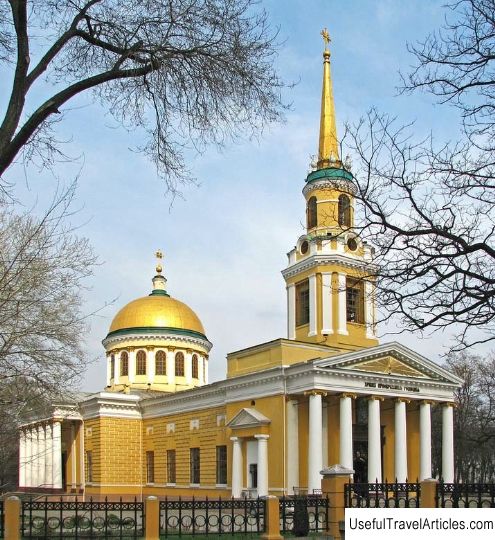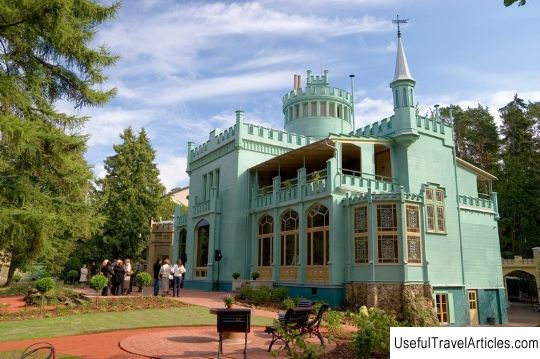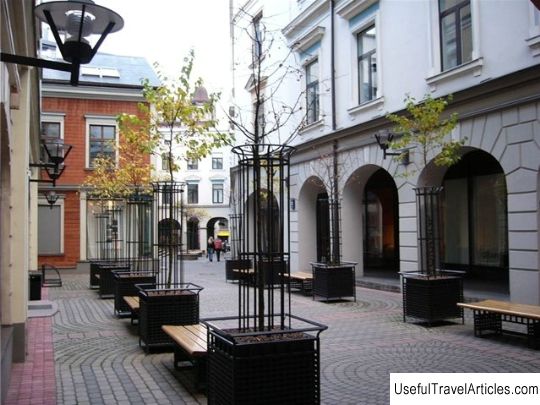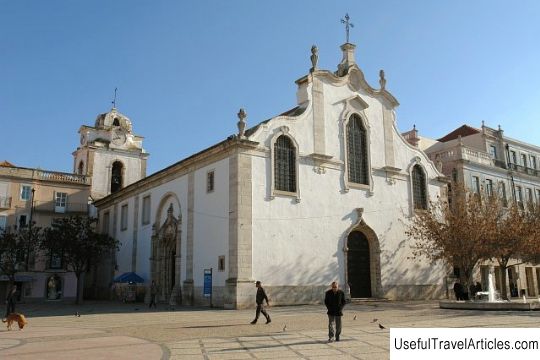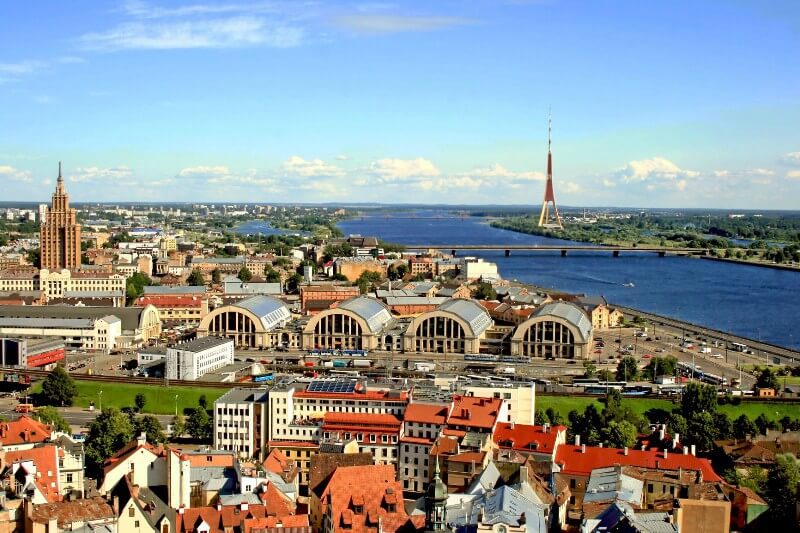Big Kristaps (Lielais Kristaps) description and photos - Latvia: Riga
Rating: 8,6/10 (1203 votes) 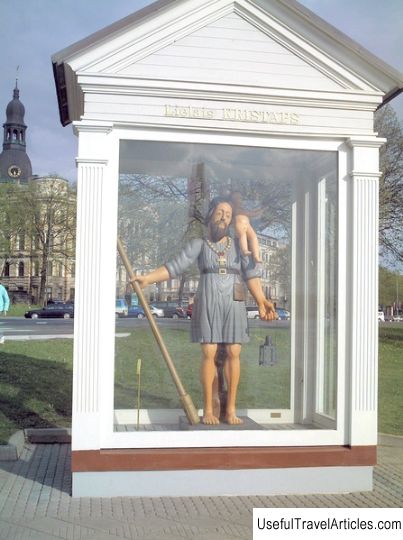
Big Kristaps (Lielais Kristaps) description and photos - Latvia: Riga. Detailed information about the attraction. Description, photographs and a map showing the nearest significant objects. The title in English is Lielais Kristaps. Photo and descriptionBig Kristaps, or St. Christopher, is a sculpture of a very tall man with a little boy on his shoulder. In one hand, he holds an oar, and in the other, a small lantern that illuminates the path across the river. Kristaps, according to the conditions of long-term service for the benefit of people, must ferry everyone across the river. For a long period of time, St. Christopher was considered the patron saint of pilots, carriers, carriers, as well as the trustee of bridges, viaducts and ferries. The sculpture itself is made of wood accented with vibrant colors. Who is the author of the Big Kristaps sculpture, made around the beginning of the 16th century, is unknown. In those days, the sculpture was popular and famous, there was even a saying that mentioned three wonders of the city, including the figure of Big Kristaps: "The bridge that lies on the water, the Giant that stands at the gate, and the Bell that hangs outside the tower." The bridge on the water, which is mentioned in the proverb, means one of the main crossings across the Daugava (Western Dvina), connecting the Inner City, which was surrounded on all sides by fortifications. The third curiosity mentioned in the proverb meant the bell of St. Blasius, which hung outside the chapel under a shako, it was attached to the tower of the Riga St. James Church and served as an "alarm bell". Well, the giant at the gate is Big Kristaps. The original location of the sculpture is unknown. However, in the 18th century, when the proverb took its final form, the statue took place at the main Charles Gate. There was a small shopping area near the indicated gate, which competed with the main trading place on the Town Hall Square. In 1861, the Big Kristaps statue took its place in a small building located on the banks of the Daugava at the beginning of Maskavas Street, which served as an important trading point and passed through the Moscow Vorstadt. The place where the statue stood was located near the building of St. George's Hospital - the most important center of charity. Next to the glass that protected the Big Kristaps sculpture from the weather was a large wooden donation mug. The collected money was transferred to the St. George hospital. Large donations were most often left by members of the Riga carrier brotherhood, as well as guest carriers, who in this way expressed gratitude to Christopher for his help in overcoming the dangerous river rapids. Besides, wives and brides of pilots and carriers brought here their jewelry: beads, ribbons, ribbons, necklaces, as gratitude for the protection of their beloved. All these items, after getting into the mug, were revered by local residents as amulets and charms with healing properties. Some of them can be found in the Museum of the History of Riga and Navigation. In addition, St. Christopher was credited with the miraculous ability to heal wounds. It was believed that if you wrap Kristaps' hand with a thread or ribbon and let it hang a little, and then remove and fasten it on yourself, then recovery is assured. Another tradition has developed: small children in front of the sculpture of St. Christopher brought a promise to behave and study well, to be honest and diligent throughout the year. At the end of the 18th century, graduate students of the Riga Polytechnic discovered their "hooligan tradition" of leaving wishes on the glass booth or even the Big Kristaps sculpture itself. The policemen fought hard against this tradition. The students believed that such an act would bring good luck to the graduate who is entering a new life. After the proclamation of the country's independence in the 1920s. the monument began to decline. During the hostilities, the glass booth fell into disrepair, as a result, it collapsed, the remains were taken away by the wipers, and no one put up a new fence. In 1923 it was decided to move the wooden statue to the Museum of the History of Riga and Navigation. There is Big Kristaps to this day. At present, in a booth made of armored glass, which is located on the Daugava embankment, there is a copy of Bolshoi Kristaps.    We also recommend reading Bobruisk Museum of Local Lore description and photos - Belarus: Bobruisk Topic: Big Kristaps (Lielais Kristaps) description and photos - Latvia: Riga. |
